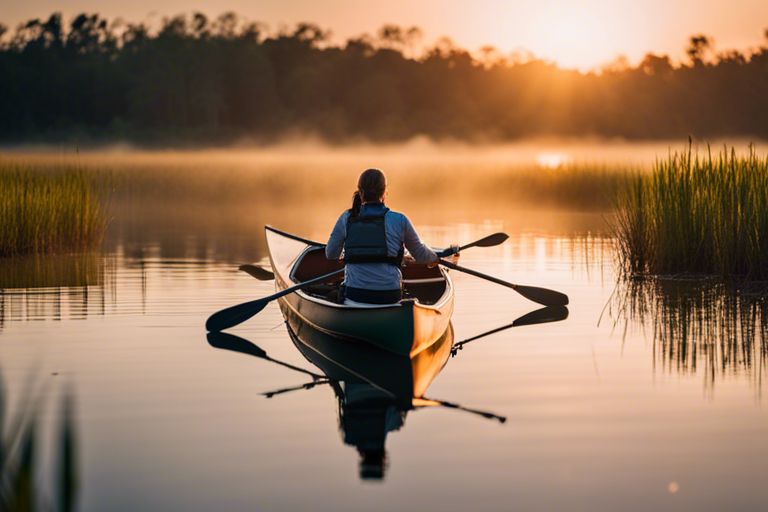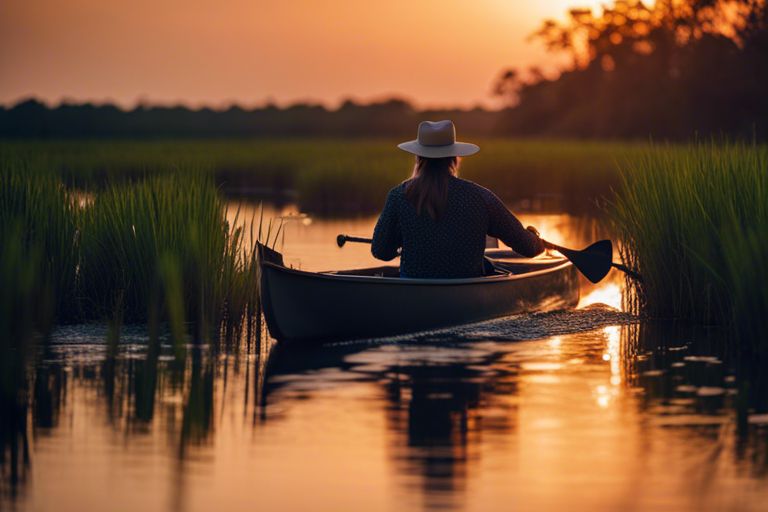Your cart is currently empty!

Discover The Mysteries Of The Everglades – Uncovering Its Secrets
Secrets hidden within the lush expanse of the Everglades are waiting to be unraveled by those curious enough to explore its depths. This unique ecosystem, known as the “River of Grass,” holds a myriad of secrets and surprises that are just waiting to be discovered. Join us on a journey as we examine into the mysteries of the Everglades and unveil the captivating secrets that lie beneath its surface.
The Geography and Biodiversity of the Everglades
Unique Landscapes and Ecosystems
A marvel of nature, the Everglades is a unique and vast subtropical wilderness located in the southern tip of Florida. Its landscape is characterized by slow-moving water, sawgrass marshes, mangroves, and shallow bays, creating a one-of-a-kind ecosystem that is unlike any other in the world. The Everglades encompasses a variety of habitats, from freshwater marshes to hardwood hammocks, providing a rich tapestry of biodiversity.
The Everglades is a mosaic of interconnected ecosystems that support a wide array of plant and animal life. It is a critical habitat for numerous species, including alligators, manatees, and the elusive Florida panther. The mix of freshwater and marine environments within the Everglades allows for a complex food chain to thrive, sustaining a delicate balance of life within its boundaries.
Flora and Fauna: Endemic Species and Conservation
Biodiversity in the Everglades is unparalleled, housing a wealth of endemic species found nowhere else on Earth. The Everglades is home to over 350 species of birds, 300 species of fish, and 40 species of mammals, making it a treasure trove for biologists and wildlife enthusiasts. However, this unique biodiversity faces threats from habitat loss, invasive species, and pollution, making conservation efforts crucial to preserving the delicate balance of the Everglades ecosystem.
One of the flagship species of the Everglades is the iconic American alligator, a keystone species that plays a vital role in shaping the wetland ecosystem. Conservation efforts in the Everglades have also focused on protecting endangered species such as the West Indian manatee and the Cape Sable seaside sparrow. Through collaborative conservation initiatives and restoration projects, there is hope for the long-term sustainability of these vital habitats and the species that depend on them.
The Human History of the Everglades
Indigenous Cultures and Their Connections to the Land
One of the most fascinating aspects of the Everglades is its rich history of indigenous cultures. For centuries, various Native American tribes such as the Tequesta, Calusa, and Miccosukee have called this unique ecosystem home. These tribes had deep connections to the land, relying on its resources for their survival and shaping their way of life around its rhythms.
Land played a central role in the spiritual beliefs and cultural practices of these indigenous peoples. They viewed the Everglades not just as a physical landscape, but as a sacred space filled with natural wonders and mysteries. The water, plants, and wildlife of the Everglades were not just resources for sustenance, but integral parts of their identity and heritage.
The Impact of European Settlement and Modern Challenges
Impact of European settlement and modern challenges have significantly altered the landscape of the Everglades. The arrival of European settlers brought about drastic changes to the ecosystem, including draining of the wetlands for agricultural purposes, construction of roads and buildings, and introduction of non-native species that disrupted the natural balance.
For instance, the growth of urban areas surrounding the Everglades has led to increased pollution and habitat destruction, threatening the delicate balance of this unique ecosystem. Climate change and rising sea levels also pose serious challenges to the Everglades, putting further pressure on the fragile environment and its inhabitants.
Scientific and Ecological Mysteries
Despite being extensively studied, the Everglades still hold many scientific and ecological mysteries that continue to baffle researchers and wildlife enthusiasts alike. From puzzling hydrological patterns to unexplained animal behavior, the secrets of this unique ecosystem run deep.
Puzzling Hydrological Patterns
Scientific research has uncovered unusual hydrological patterns in the Everglades that defy traditional water flow models. The complex interactions between surface water and groundwater create a dynamic system that is constantly shifting and evolving. Researchers are still trying to understand how these intricate patterns influence the overall health of the ecosystem.
One of the most puzzling aspects is the movement of water through the porous limestone bedrock that underlies the Everglades. This unseen network of channels and pathways plays a crucial role in shaping the landscape and supporting the diverse plant and animal life that call the Everglades home.
Unexplained Animal Behavior and Adaptations
Scientific observations have revealed a number of unexplained animal behaviors and adaptations in the Everglades that challenge our understanding of species dynamics. From mysterious migration patterns to unique feeding habits, many wildlife species in the region exhibit behaviors that have yet to be fully explained.
One fascinating example is the adaptation of certain birds to the Everglades’ wetland environment. Birds like the iconic roseate spoonbill have evolved specialized bill structures that allow them to efficiently filter food from the water, demonstrating the incredible ways in which animals have adapted to thrive in this complex ecosystem.
Puzzling hydrological patterns and unexplained animal behaviors in the Everglades continue to intrigue researchers and nature enthusiasts, highlighting the need for ongoing scientific exploration and conservation efforts in this remarkable natural wonder.
Exploring the Everglades Today
Opportunities for Adventure and Discovery
Not just a vast expanse of wetlands, the Everglades offers endless opportunities for adventure and discovery. From guided airboat tours that glide through the River of Grass to hiking trails that lead to hidden gems, visitors can immerse themselves in the unique ecosystem of the Everglades.
On a journey through the Everglades, one can encounter a variety of wildlife such as alligators, birds, and rare plant species. The thrill of exploring the untouched wilderness and observing the natural beauty of the Everglades captivates the hearts of those who seek a deeper connection with nature.
The Role of Research and Technology in Unraveling Mysteries
On the cutting edge of scientific exploration, research and technology play a crucial role in unraveling the mysteries of the Everglades. Scientists utilize advanced tools like drones and satellite imagery to study the ecosystem from above, providing valuable insights into its intricate workings.
To further understand the complexity of the Everglades, researchers conduct studies on water flow, biodiversity, and climate change impacts. By combining fieldwork with modern technology, scientists are able to piece together the puzzle of the Everglades and contribute to its conservation.
To probe deeper into the mysteries of the Everglades, researchers also study the effects of human activities on the ecosystem. By monitoring pollution levels, invasive species, and habitat destruction, scientists can develop strategies to protect and preserve this delicate environment for future generations.

Final Words
Taking this into account, exploring the mysteries of the Everglades is an incredible journey that reveals the unique and diverse ecosystem of this vast wilderness. By uncovering its secrets, visitors can gain a deeper appreciation for the delicate balance of nature that thrives within these wetlands. Preserving and protecting the Everglades is not only crucial for the survival of its plant and animal inhabitants but also for the future generations who will continue to be captivated by its beauty and wonder. Let us all take the responsibility to cherish and safeguard this natural treasure for years to come.
FAQ
Q: What makes the Everglades a unique and special ecosystem?
A: The Everglades is a unique ecosystem due to its slow-moving water, diverse plant and animal life, and the presence of both freshwater and saltwater environments. It is the largest tropical wilderness in the United States and is home to many endangered species.
Q: How can visitors best experience the beauty and wildlife of the Everglades?
A: Visitors can best experience the Everglades by taking airboat tours, hiking on designated trails, kayaking through mangrove tunnels, and participating in guided eco-tours. These activities allow visitors to immerse themselves in the natural beauty and wildlife of the Everglades.
Q: What are some of the key threats to the Everglades and how can we help protect this valuable ecosystem?
A: Key threats to the Everglades include urban development, pollution, invasive species, and climate change. To help protect this valuable ecosystem, individuals can support conservation efforts, reduce their carbon footprint, participate in clean-up initiatives, and educate others about the importance of preserving the Everglades.
Leave a Reply